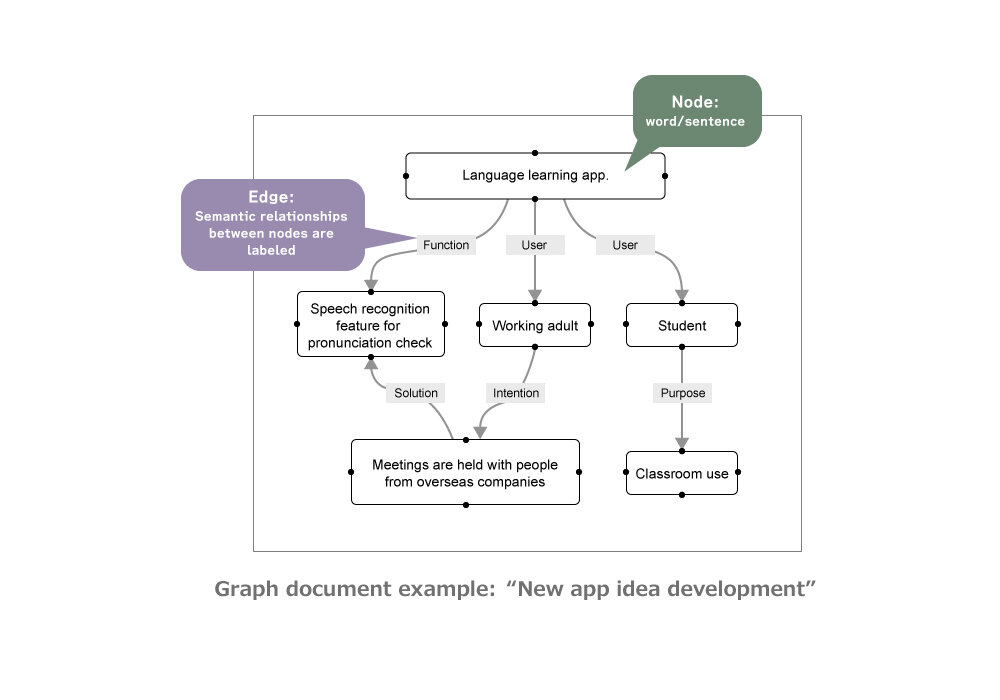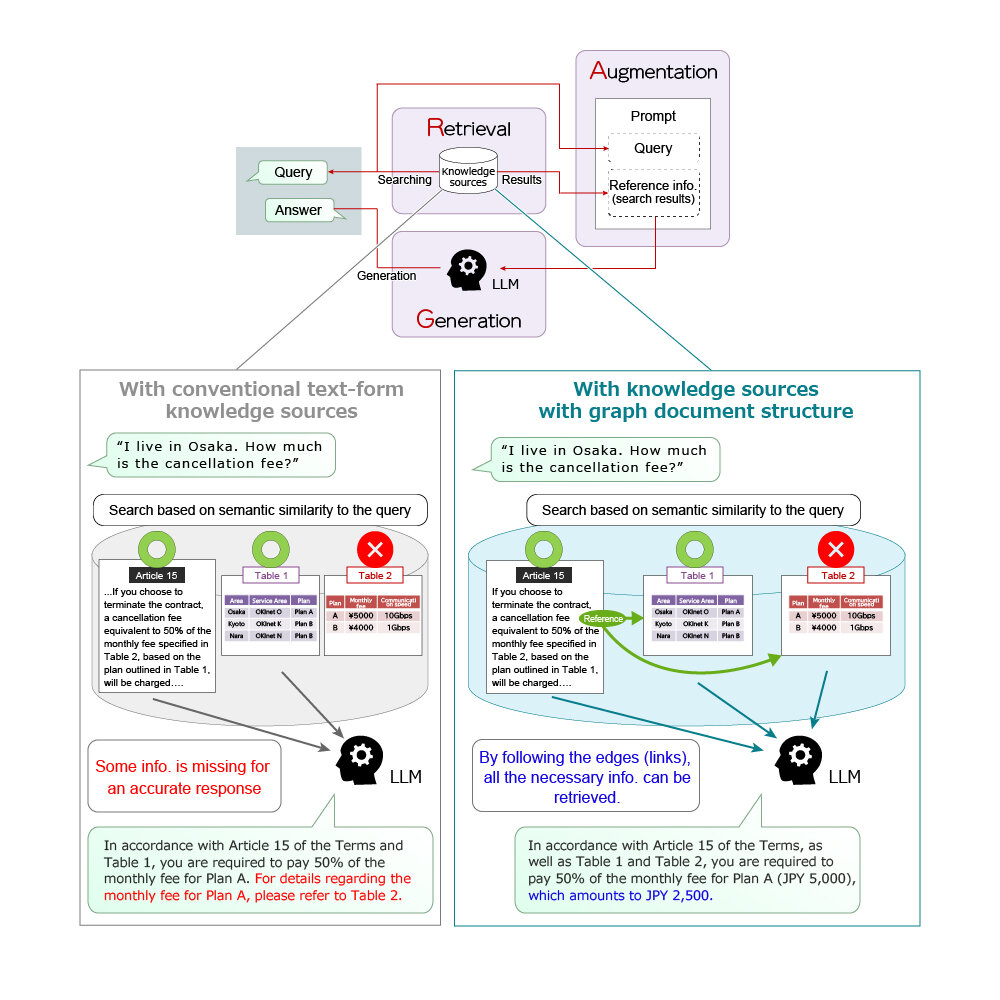Graph Document Technology for Human-AI Coevolution
Outline of the Technology
Large language models (LLMs) achieve general dialog ability by being pretrained with a vast amount of publicly available data from the Internet and other sources, and their social implementation has been progressing rapidly during the last few years. To expand the capabilities of LLMs, technologies such as retrieval-augmented generation (RAG) have been developed and are already in use. RAG enables LLMs to utilize internal information and other non-public data or newer information that was not included in LLMs’ training data. A negative aspect of LLMs, on the other hand, is a phenomenon known as “hallucination,”where the models generate or even fabricate incorrect information. Since this happens quite often, it can pose significant problems when using LLMs for business-critical purposes.
To address this problem, OKI has been developing a graph document technology, in which knowledge is structured and utilized in the form described below. By leveraging graph documents, LLMs can be effectively utilized for highly specialized tasks and operations where a high level of reliability is required.

OKI’s Unique Strength Demonstrated in This Technology
In order to expand LLM’s capability, we give external sources from which our RAG retrieves information the form of graph documents. Graph document features a network structure (graph structure) consisting of nodes and edges (links). Words and sentences are represented as nodes, and semantic relationships between nodes are represented on edges. This structure makes it possible for our RAG to provide an LLM not only with direct information for answering user queries, but also with indirect reference or supplementary information by tracing edges between nodes (words and sentences). This enhances the accuracy of responses. By providing LLMs necessary and sufficient information, this OKI technology delivers an LLM experience free from hallucinations.
Potential Use Cases
Potential use cases include business fields where generation of accurate responses to customers is essential, such as call center operations; idea development such as business creation where in-house information must be considered; and daily operational support in any department, all leveraging the technology’s capability to accurately utilize in-house, specialized or recent information.

Vision for Future Development
While graph documents are an efficient form of document for AI (LLM) to process, they also help humans better understand the logical structure of information. Furthermore, they contribute to the enhancement of users’ ability to think logically. By building an ecosystem using graph documents as sources of knowledge, OKI aims for society where capabilities of both human and AI continue to evolve.
This technology is a result of our project that was adopted by New Energy and Industrial Technology Development Organization (NEDO) under the initiative “Technology Development Project on Next Generation Artificial Intelligence Evolving Together with Human Beings.“
